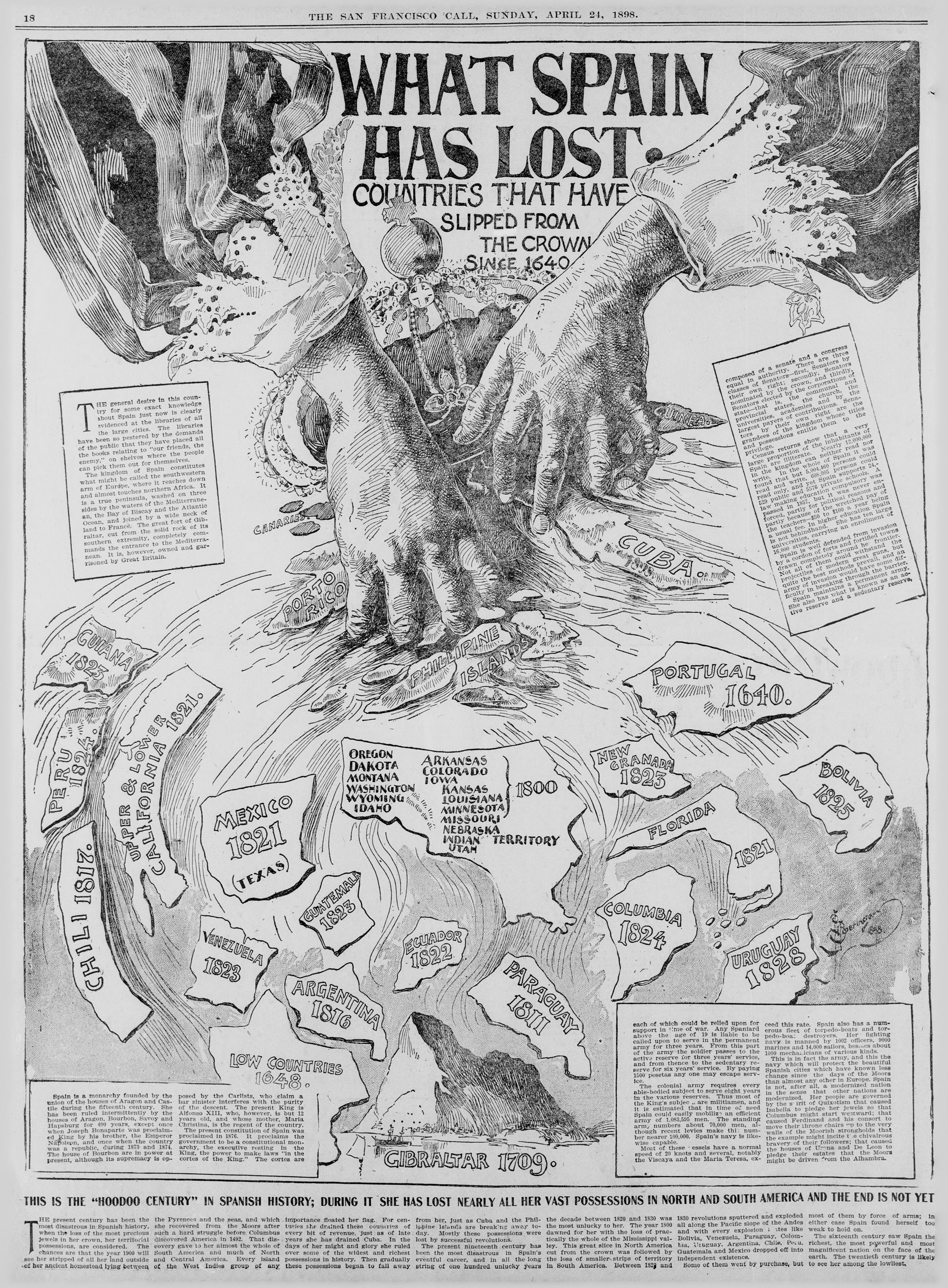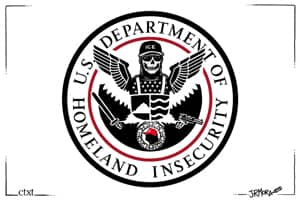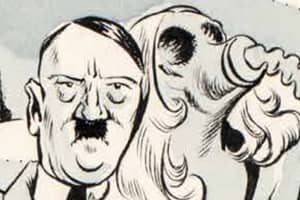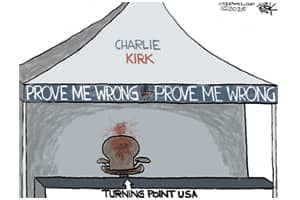Spanish-American War in cartoons
*Spanish version oh this article.
Spanish cartoons (La Correspondencia, Black and White, D.Quixote, Spanish Cuba) and Americans (The World NY, Herald) confronted in an "infographic" of the time. Source: The San Francisco Call, May 15, 1898, Page 18.
The Spanish-American War (25 April to 12 August 1898), also known as the "Disaster of '98" or the "War of Cuba", not only meant the decline of the Spanish empire and the loss of its last overseas colonies for a new division of the territories, also opened up another contest that was fought in the pages of the tabloids.
The war of 1898 was the first war, if not provoked, at least accelerated, by the sensationalism of the media. It is even set to be the year of the birth of the yellow press in the United States, spilling over into the Spanish one.
The American media represented their country with the traditional powerful and just "Uncle Sam", while showing the Spanish as barbarians, murderers, ignorant, liars, fake sympathizers, hypocrites and dressed up as bullfighters and bandits. They even invented massacres, humiliations and tortures by giving themselves up to propaganda without half measures.
The Spaniards also raised the tone of what was already beginning to be called "anti-Americanism" to depict the "Yankees" as invading pigs, looters and murderers while the image most used to symbolise the Spanish was that of a fierce lion.
Depending on how one reads the various parts on conflict, versions can be found that highlight the attacks by one side or the other by tilting the balance of blames.
There is much more documentation on American cartoons than on Spanish ones, which were more frequent in magazines than in newspapers, I suppose partly because of the coincidence of the beginning of the crisis in the Spanish press that took some newspapers away and also the credibility enjoyed by others at that time.
Cartoons from the Spanish-American War period
This is a review of a few cartoons, not all of them, that were crossed by both sides in newspapers and magazines, before, during and after the Spanish-American War. They are ordered by date, all dating back to 1898.

Magazine La Campana de Gràcia number 1498 of January 29th.
Legend: "With the mask of friendship he already has one leg in it"
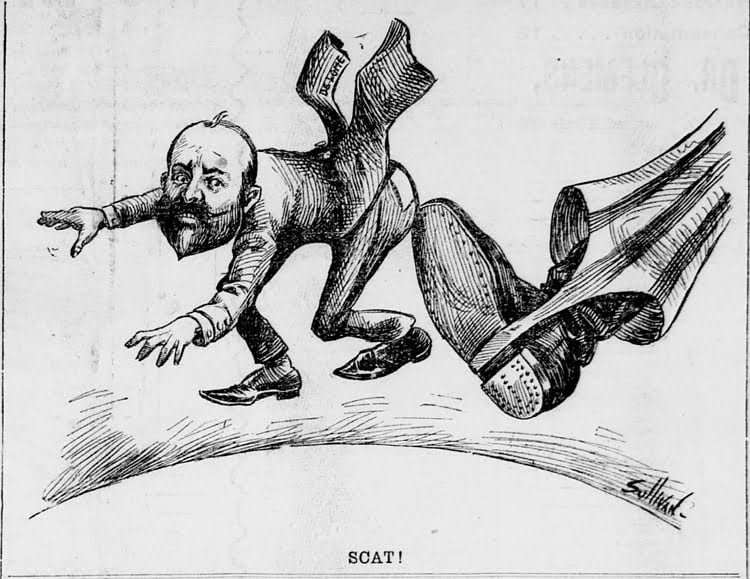
11 February, Sullivan's cartoon in The Times (Washington D.C.) on the resignation of Spanish ambassador Enrique Dupuy de Lome for his comments on relations with the USA regarding the island of Cuba and on McKinley, doubting his ability to serve as president and describing him as weak, populist and "politicastro" (bad politician).
Four days later the battleship Maine exploded.
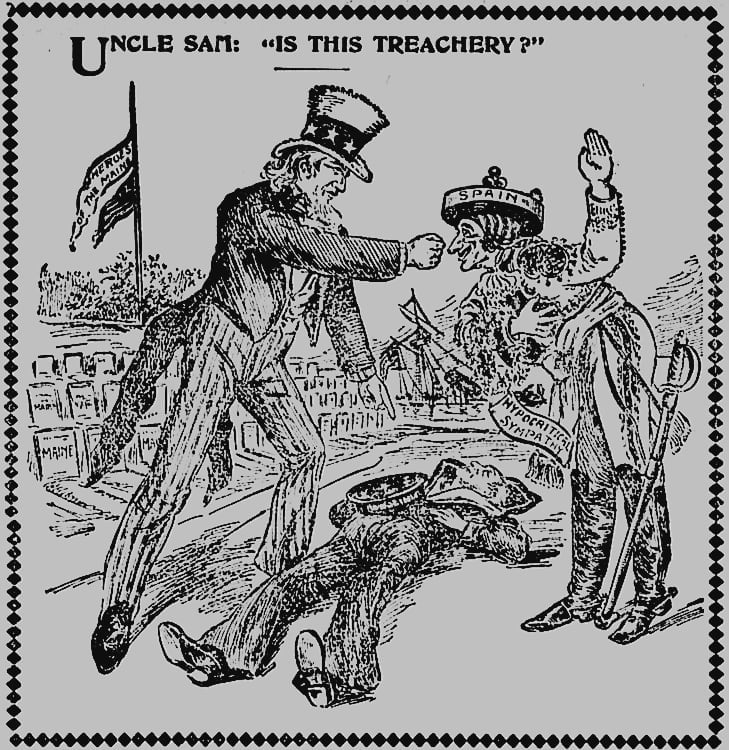
Unsigned cartoon of March 11 published in Hot Springs Weekly Star. Eternal Uncle Sam rebukes the Spaniard: "Is this betrayal/false?" At his feet a dead sailor.
At the bottom the graves of the dead in the sinking of the Maine. On the US flag the legend "Heroes of Maine".
The Spaniard makes a gesture of reverence, above him there is a small sign that reads "hypocritical sympathy".
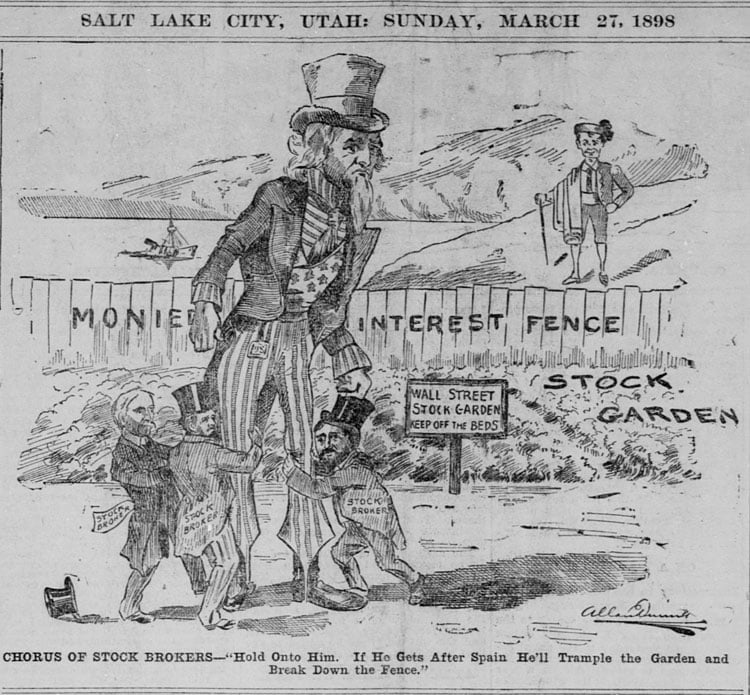
Cartoon published in The Salt Lake Herald on March 27. Brokers try to stop "Uncle Sam" to avoid the confrontation with Spain, in the background the sunken American battleship "Maine", one of the triggers of the war and origin of the phrase and war cry: "Remember the Maine, to Hell with Spain!
Spanish Barbarians
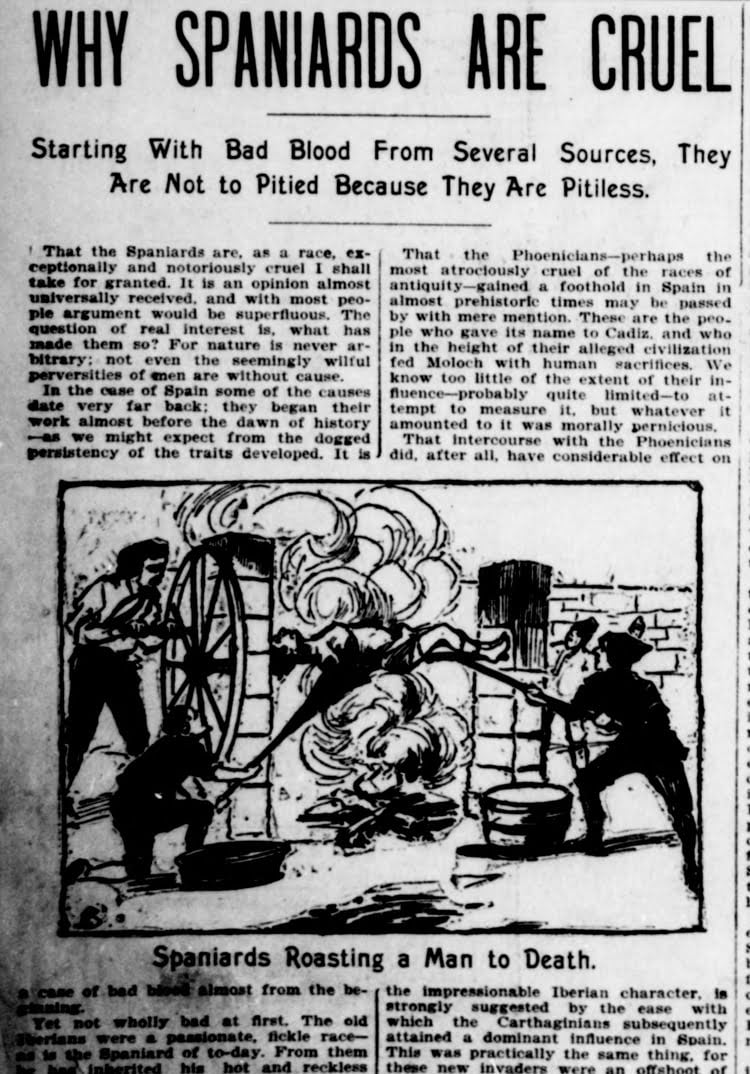
Also on March 27th in The Anaconda Standard (Montana), they dedicate a good space to the cruelty of the Spanish and assure that they carry it in the mixture of their different bloods. "They have no mercy because they are ruthless," they said without further argument. In three illustrations they show Spaniards roasting a man to death and torturing and killing others in different ways.
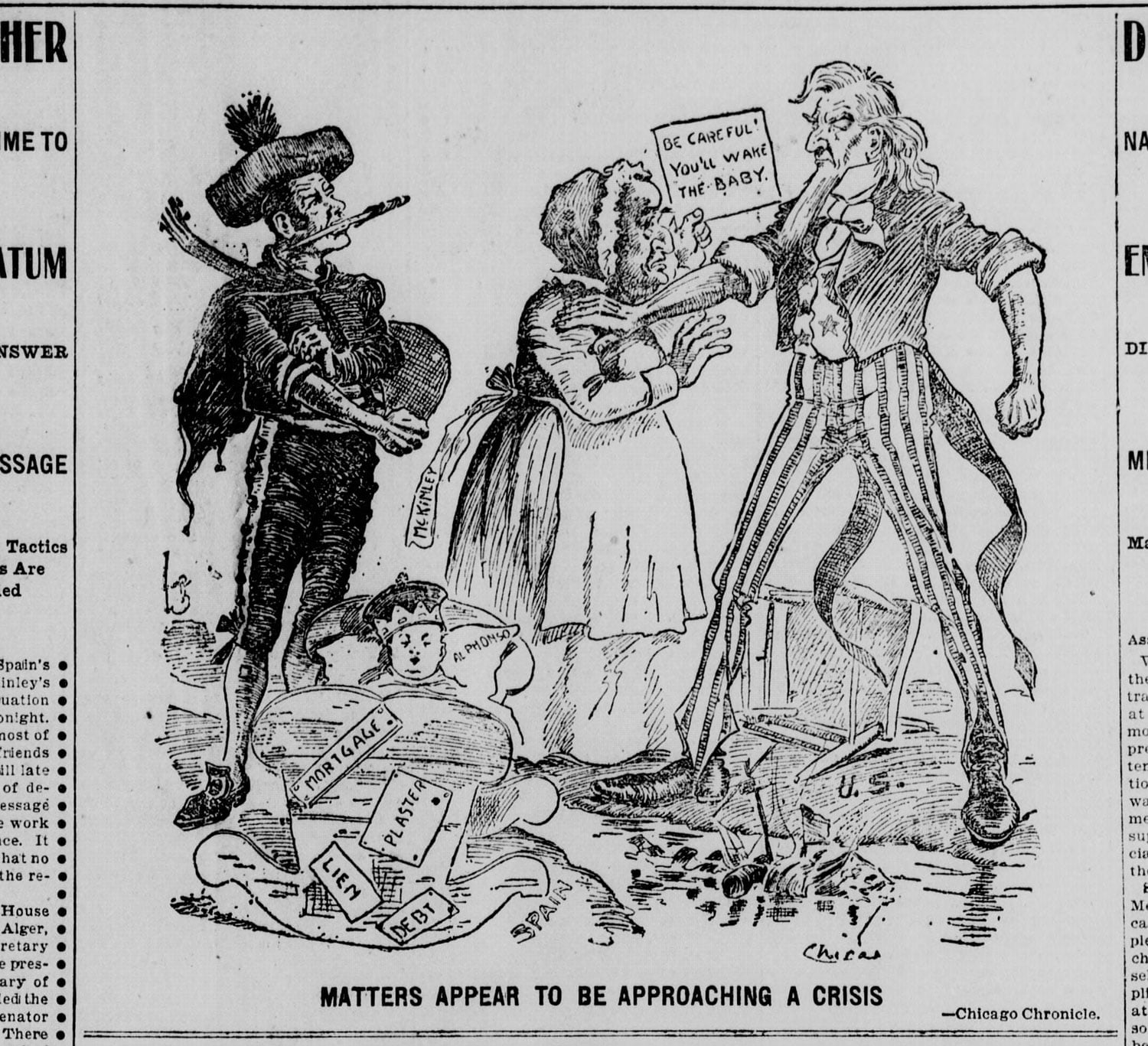
Chicago Cronicle cartoon published in The Herald on April 1st
War seems imminent, in the picture an "Uncle Sam", determined to fight the Spaniard, tries to push President McKinley away, depicted as a babysitter who warns him to be careful not to wake the child king (Alfonso). In his cradle appear words related to the economic situation of Spain.

On 10 April The Saint Paul Globe wrote on its cover: "The semi-barbarians of the Iberian Peninsula have hung up the white flag for a period of five days".

Cartoon from The New York World published on 21 April on the cover of The Topeka State Journal. Uncle Sam inviting Spain to leave the Western Hemisphere:
"Your choice, sir, peaceably or by force".
What Spain Has Lost
Page of The San Francisco Call of 24 April, one day before the start of the war, under the title "What Spain has lost, countries that have slipped away from the crown since 1640".
30th April 1898. Cartoon by Ramón Cilla entitled "warrior purposes" in the magazine Madrid Cómico. The expression "no sea mackinleiro" refers to the American President McKinley. The tone of humour in Spain denotes a certain distance, almost carefree.
In fact, some documents point out that for many it went almost unnoticed in that the effects of it fell more on those with commercial interests in the colonies than on the ordinary people.
Many even breathed a sigh of relief knowing that they would no longer be sent to serve in those places.

From the pages of the newspapers they already warned the Spanish cartoonists, by way of threat and prediction, that they would have to change their way of drawing the "American pig". Instead of the fat, inactive, lazy and harmless pig, they would have to draw it as a more ferocious and terrible creature with tearing fangs
The Evening Star, 12 May, see page.

